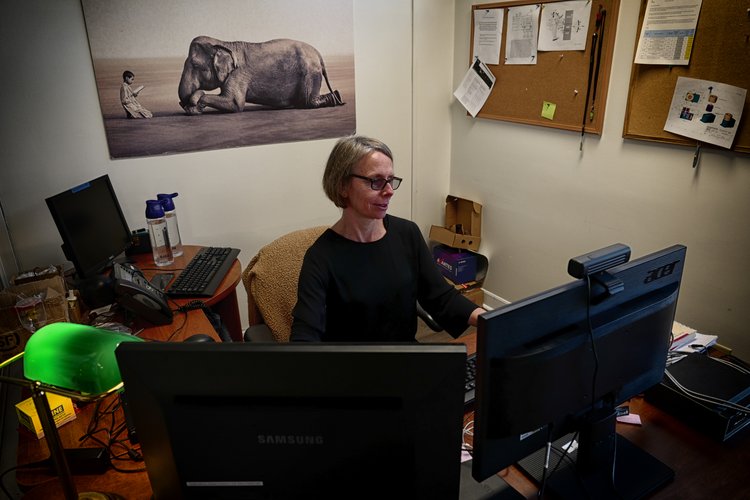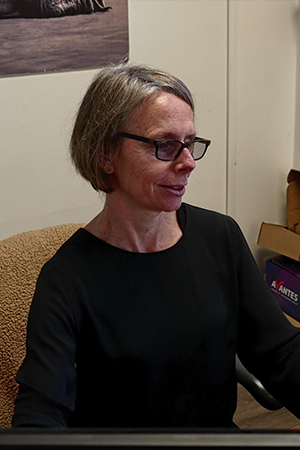Circularly Polarized Luminescence Can Be Fun For Anyone
Circularly Polarized Luminescence Can Be Fun For Anyone
Blog Article
Not known Facts About Circularly Polarized Luminescence
Table of ContentsThe Buzz on Circular DichroismGetting The Circularly Polarized Luminescence To WorkSome Known Questions About Circularly Polarized Luminescence.The 5-Second Trick For Uv/vis/nirThe Definitive Guide for Circular Dichroism

Spectrophotometry is most frequently used to ultraviolet, noticeable, and infrared radiation, contemporary spectrophotometers can question large swaths of the electromagnetic spectrum, consisting of x-ray, ultraviolet, visible, infrared, and/or microwave wavelengths. Spectrophotometry is a tool that depends upon the quantitative analysis of particles depending on how much light is absorbed by colored substances.
What Does Uv/vis/nir Do?
A spectrophotometer is typically utilized for the measurement of transmittance or reflectance of solutions, transparent or opaque solids, such as polished glass, or gases. Although numerous biochemicals are colored, as in, they soak up noticeable light and for that reason can be measured by colorimetric treatments, even colorless biochemicals can frequently be converted to colored substances suitable for chromogenic color-forming responses to yield compounds ideal for colorimetric analysis.: 65 Nevertheless, they can also be developed to measure the diffusivity on any of the noted light varieties that usually cover around 2002500 nm using different controls and calibrations.
An example of an experiment in which spectrophotometry is utilized is the determination of the stability constant of an option. A certain chemical reaction within an option may take place in a forward and reverse instructions, where reactants form items and items break down into reactants. At some point, this chain reaction will reach a point of balance called a balance point.
Circular Dichroism Can Be Fun For Anyone
The quantity of light that travels through the service is a sign of the concentration of specific chemicals that do not permit light to travel through. The absorption of light is because of the interaction of light with the electronic and vibrational modes of particles. Each type of molecule has a private set of energy levels related to the makeup of its chemical bonds and nuclei and therefore will soak up light of specific wavelengths, or energies, leading to special spectral residential or commercial properties.
They are extensively used in lots of markets including semiconductors, laser and optical manufacturing, printing and forensic assessment, as well as in laboratories for the study of chemical compounds. Spectrophotometry is often used in measurements of enzyme activities, decisions of protein concentrations, determinations of enzymatic kinetic constants, and pop over to these guys measurements of ligand binding reactions.: 65 Ultimately, a spectrophotometer is able to identify, depending on the control or calibration, what compounds are present in a target and precisely how much through calculations of observed wavelengths.
Developed by Arnold O. Beckman in 1940 [], the spectrophotometer was created with the help of his associates at his business National Technical Laboratories established in 1935 which would end up being Beckman Instrument Business and eventually Beckman Coulter. This would come as an option to the formerly created spectrophotometers which were unable to take in the ultraviolet correctly.
Our Circular Dichroism Statements
It would be found that this did not offer acceptable outcomes, for that reason in Model B, there was a shift from a glass to a quartz prism which enabled for much better absorbance results - UV/Vis (https://dribbble.com/olisclarity1/about). From there, Model C was born with an adjustment to the wavelength resolution which wound up having 3 units of it produced
It was produced from 1941 to 1976 where the price for it in 1941 was US$723 (far-UV accessories were an option at extra expense). In the words of Nobel chemistry laureate Bruce Merrifield, it was "most likely the most essential instrument ever developed towards the development of bioscience." Once it ended up being stopped in 1976, Hewlett-Packard produced the very first commercially offered diode-array spectrophotometer in 1979 referred to as the HP 8450A. It irradiates the sample with polychromatic light which the sample absorbs depending upon its homes. It is sent back by grating the photodiode range which detects the wavelength area of the spectrum. Ever since, the creation and application of spectrophotometry gadgets has increased immensely and has turned into one of the most ingenious instruments of our time.

The Greatest Guide To Circularly Polarized Luminescence
The grating can either be movable or fixed.
In such systems, the grating is fixed and the intensity of each wavelength of light is measured by a different detector in the selection. When making transmission measurements, the spectrophotometer quantitatively compares the portion of light that passes through a recommendation solution and a test service, then digitally compares the strengths of the 2 signals and calculates the portion of transmission of the sample compared to the recommendation standard.

Report this page